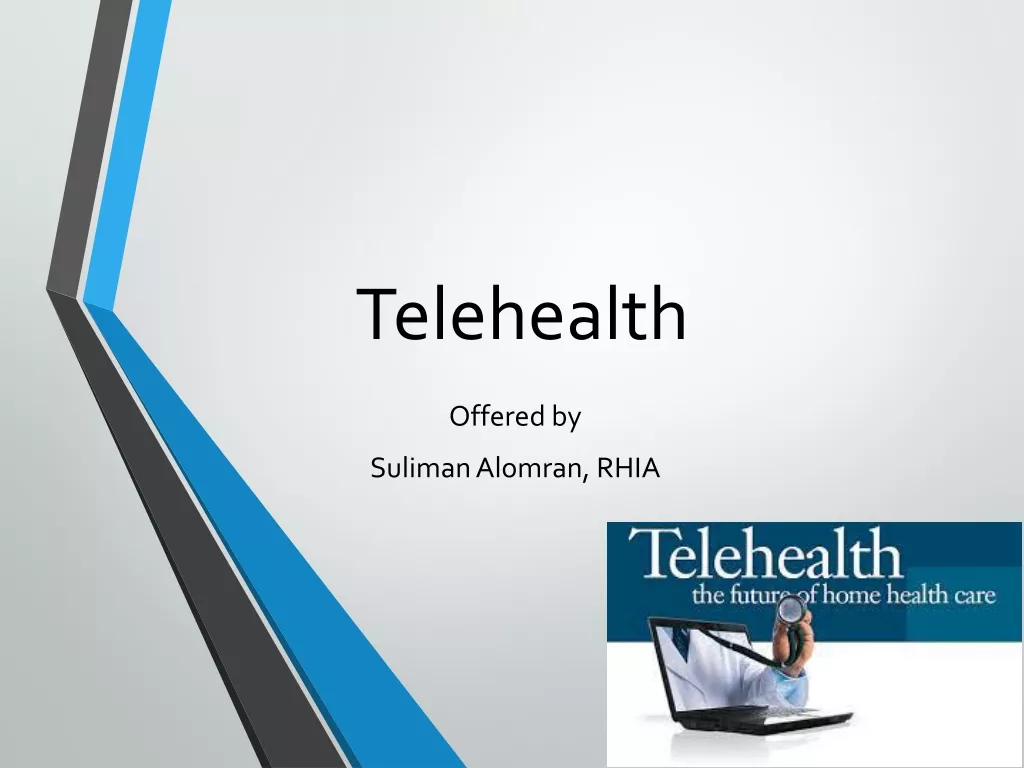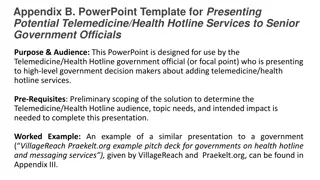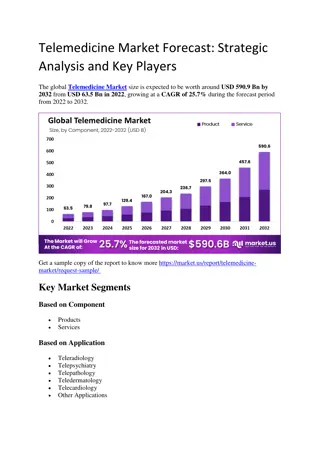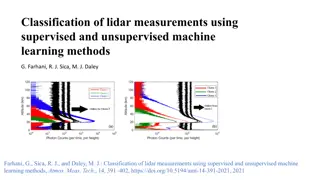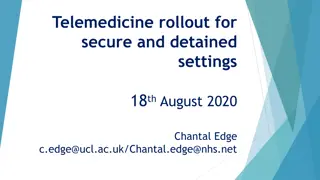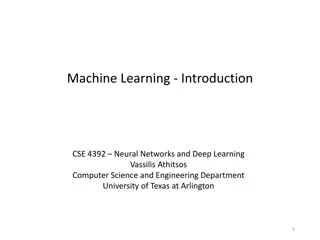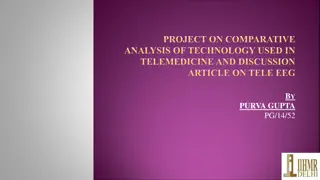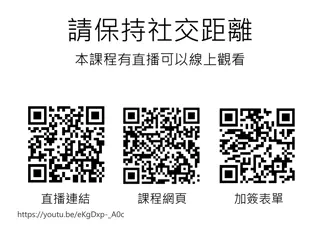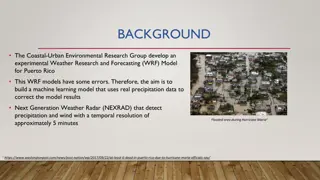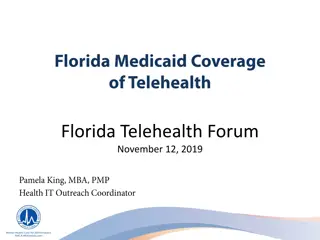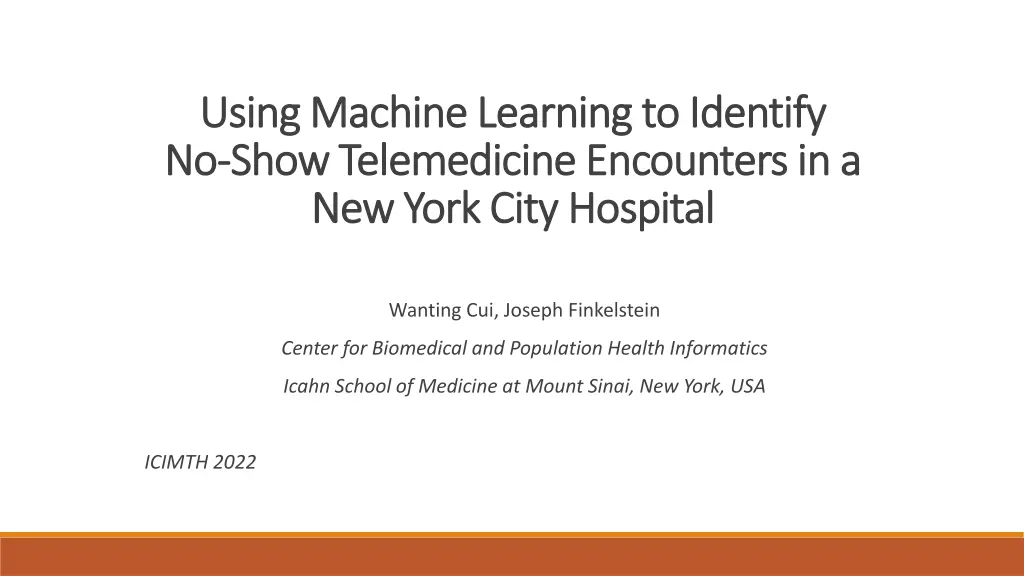
Machine Learning for Identifying No-Show Telemedicine Visits
Explore a study on using machine learning to identify potential no-show patients in telemedicine visits at a New York City hospital. Discover methods, predictive models, dataset details, and factors affecting no-show visits. This research aims to address the common issue of missed appointments in healthcare settings using advanced technology.
Download Presentation

Please find below an Image/Link to download the presentation.
The content on the website is provided AS IS for your information and personal use only. It may not be sold, licensed, or shared on other websites without obtaining consent from the author. If you encounter any issues during the download, it is possible that the publisher has removed the file from their server.
You are allowed to download the files provided on this website for personal or commercial use, subject to the condition that they are used lawfully. All files are the property of their respective owners.
The content on the website is provided AS IS for your information and personal use only. It may not be sold, licensed, or shared on other websites without obtaining consent from the author.
E N D
Presentation Transcript
Using Machine Learning to Identify Using Machine Learning to Identify No No- -Show Show Telemedicine Encounters in a Telemedicine Encounters in a New York City Hospital New York City Hospital Wanting Cui, Joseph Finkelstein Center for Biomedical and Population Health Informatics Icahn School of Medicine at Mount Sinai, New York, USA ICIMTH 2022
Introduction No-show visits Patients making an appointment with the healthcare centers, but failing to attend their appointments without previous notice. A common and important problem for hospitals not only in the United States but several countries around the world It could cost a major hospital over 15 million dollars annually Methods to prevent no-show visit Reminder system Imposing penalization The average no-show rate for a healthcare center was 3% to 18%
Introduction Building predictive models to identify potential no-show patients Current models [1]: Regression Models: Logistic regression, multiple linear regression Train Based Models: Decision trees Neural Network, Marko Based Models, Bayesian Models All studies are in-person visits Telemedicine visits are different: Less transportation constraint Higher requirements for technology [1] Carreras-Garc a D, Delgado-G mez D, Llorente-Fern ndez F, Arribas-Gil A. Patient no-show prediction: A systematic literature review. Entropy. 2020 Jun;22(6):675
Objective Build machine learning models to identify potential no-show patients in telemedicine visits Identify significant factors that affect no-show visits
Method Dataset Extracted from the electronic health record (EHR) at Mount Sinai Health Date: March 2020 to December 2020 Telemedicine visits: Video visits Telehealth Telephone visits Telemedicine visits Non-face to face visits
Method The dataset was separated into two groups: Patients that didn t show up for the visit Patients presented at the visit We identified 10 factors that could be obtained prior to their arrivals Visit type Age, Sex, Race 5 New York City Boroughs Health providers primary specialty, providers type Day of the week Number of previous telemedicine visits and number of previous no-show encounters Since each patient could have multiple encounters, we treated each encounter independently
Predictive Models Dataset characteristics: There were over 257,000 telemedicine sessions Around 5,000 of telemedicine session were no-show encounters (2%) Imbalanced dataset In our previous study, we explored the effectiveness of logistic regression and tree based models on imbalanced medical data prediction [1] Tree based model with sampling achieved the best result [1] Cui W, Bachi K, Hurd Y, Finkelstein J. Using Big Data to Predict Outcomes of Opioid Treatment Programs. Stud Health Technol Inform. 2020 Jun;272:366-369
Predictive Models Machine learning models: Support vector machine (SVM) Random Forest (RF) Extreme gradient boosting (XGB) Sampling on the training set: Radom up sampling Random under sampling Synthetic minority oversampling technique (SMOTE) Parameter tuning, cross validation Evaluation metrics: Area under the ROC curve (AUC)
Results There were 257,293 telemedicine sessions between March 2020 and December 2020 5,124 of telemedicine session were no-show encounters (2%) There were 152,164 unique patients in the dataset 4,150 patients had at least one no-show encounter during this time period (2.7%)
Results 10 predictors Target variable (binary): whether a patient presented to the telemedicine session Test CVAUC Model Sampling Accuracy Test AUC 0.70 SVM Under 0.75 0.64 0.68 RF Under 0.81 0.66 0.68 XGB Under 0.74 0.68
Results Investigated the feature importance of XGB model Identified the top 5 factors: Patients previous no-show encounters Race Boroughs Providers type Providers specialty
Table 2. Top features affecting patients no-show rate based on patients information No Show Encounters count Present Encounters count percent percent Previous no show 0 times 1-2 times 3 or more times Race Asian Black Others White Borough Bronx Brooklyn Manhattan Others Queens 4171 605 348 81.40% 11.80% 6.80% 245999 5142 1028 97.60% 2.00% 0.40% 269 1077 2253 1525 5.20% 21.00% 44.00% 29.80% 15126 31392 87517 118134 6.00% 12.40% 34.70% 46.80% 658 757 2155 923 631 12.80% 14.80% 42.10% 18.00% 12.30% 18916 42537 87279 75508 27929 7.50% 16.90% 34.60% 29.90% 11.10%
Table 3.Top features affecting patients no-show rate based on providers information No Show Encounters Present Encounters count percent count percent Provider Type Nutritionist 163 3.20% 1817 0.70% Physician 3382 66.00% 206488 81.90% Psychologist 157 3.10% 4171 1.70% Social Worker Provider Specialty 707 13.80% 8600 3.40% Cardiology 81 1.60% 10479 4.20% Dermatology 106 2.10% 10912 4.30% Endocrinology 137 2.70% 16455 6.50% Nutrition 163 3.20% 1223 0.50% Pediatric care 141 2.80% 13091 5.20% Adult Psychiatry 472 9.20% 6475 2.60% Children Psychiatry 319 6.20% 2383 0.90%
Discussion XGB was the best model, it had the highest AUC score XGB model could provide feature importance that allowed us to analyze factors that are associated with no-show encounters Patients with previous no-show encounters, non-White or non-Asian patients were important factors for no-show visits Patients location (Borough) was an import factor Patients do not need to travel to hospital or clinics Related to patients socioeconomic factors In future studies: Explore more machine learning and sampling methods to increase the prediction accuracy Map Zip code into income level, education level and other socioeconomic factors
Conclusion XGB with under sampling was the best machine learning model to identify no-show patients using telemedicine service Patients previous no-show encounters, race and location (boroughs), providers type and specialty were the 5 factors that were highly correlated to no-show encounters Physicians with specialities in psychiatry and nutrition, and social workers were more susceptible to higher patient no-show rate
Thank You! CONTACT INFORMATION: WANTING CUI EMAIL: WANTING.CUI@MSSM.EDU

